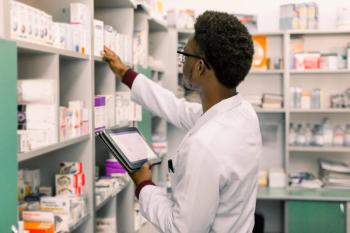
- Drug Topics January 2021
- Volume 165
- Issue 1
Understanding the COVID-19 Vaccine
Pharmacists can prepare themselves to address patients’ questions and concerns about the COVID-19 vaccines.
The coronavirus disease 2019 (COVID-19) vaccine landscape is rapidly changing. As pharmacists prepare to eventually immunize the public, they should equip themselves with the knowledge necessary to accurately address patients’ questions and concerns.
In a virtual session at the American Society of Health-System Pharmacists 2020 Midyear Clinical Meeting and Exhibition, Litjen Tan, PhD, MS, chief strategy officer at Immunization Action Coalition in Saint Paul, Minnesota, and Mary S. Hayney, PharmD, MPH, FCCP, BCPS, professor of pharmacy at the University of Wisconsin–Madison School of Pharmacy, discussed the clinical considerations for ensuring the safety and efficacy of a COVID-19 vaccine, as well as opportunities to address vaccine hesitancy.1
Clinical Trial Designs
With COVID-19 vaccines moving through the development process at a much faster pace than other vaccines might, patients may be concerned about compromised safety and efficacy. However, there is no reason for worry, Tan explained in his overview of the clinical trial design process for COVID-19 vaccines. Although the process differs from that of traditional vaccine development, Tan reiterated that no steps are eliminated in the evaluation of safety and efficacy.
According to Tan, the process for traditional vaccines from the time of development to actual vaccine manufacturing and dissemination takes anywhere from 10 to 20 years. For COVID-19 vaccines, all the same development steps still apply; however, the phase 2 and phase 3 trials are instead conducted simultaneously to ensure an “exquisite balance of speed, safety, and efficacy,” for a target timeline of up to 12 months, Tan explained.
“That is the reason why the development process of normally 8 years can be very, very quickly compressed to a rapid development process without sacrificing safety and efficacy,” Tan said.
This involves ensuring the safety and effectiveness in healthy human participants are studied in parallel while maintaining the trial size, quality, approval of regulatory trials, and ability to scale up. Additionally, incoming data can be used to modify the trial as it moves forward.
Tan used the Pfizer/BioNTech vaccine trials as an example of “how the clinical trials have been compressed so [manufacturers] can adapt as the data come,” he said.
Pfizer began with 4 vaccine candidates, Tan explained. In the phase 1 study, for each of those candidates, Pfizer started with a younger age group and multiple doses, conducting an internal safety review for each dose. Each dose that passed the safety review was then moved up to testing in older age groups. Pfizer used these data to select its best vaccine candidates to study in phase 2 and phase 3 trials.
“It was during phase 2 and phase 3 that they eventually whittled it down based on the first 360 participants of the [simultaneously conducted] phase 2/phase 3 trials,” Tan said. After the first 360 participants, Pfizer was able to unblind those to see which of the vaccine candidates was the best option to advance into the final, larger phase 3 trials.
Regulatory Review and Approval
Although COVID-19 vaccines may receive Emergency Use Authorization (EUA) from the FDA, that designation does not mean they are fully approved, Tan noted. EUAs are not the same as actual approvals. “Generally, they are used only when there are no other adequate approved and available therapies,” he explained. Therefore, after the FDA issues an EUA, manufacturers must continue to seek regulatory approval for the vaccines.
Additionally, Tan assured that “there is actually harmonization for all the manufacturers…to get to the approval licensure or the EUA phase of the vaccine development process.”
The FDA issued a guidance noting minimal conditions that manufacturers must meet in the clinical trials for COVID-19 vaccines. For example, the primary end point for all manufacturers must be prevention of symptomatic COVID-19 by at least 50%.
“What is true for all vaccines, including vaccines that come out of the [EUA], is that all federal agencies that are involved in the process, along with private partners, will monitor safety after the public begins using that vaccine,” Tan added.
Hayney discussed how a COVID-19 vaccine released via EUA would be handled differently by clinicians. She said that health care providers and potential patients must be informed of:
- an EUA authorized by the US Department of Health & Human Services secretary,
- the extent to which benefits and risks of a vaccine are unknown,
- the option to accept or refuse administration,
- known and potential benefits and risks of a vaccine,
- alternatives to the product and their benefits and risks, and
- consequences of refusing administration.
These notes will appear on a succinct fact sheet that providers must give to each potential recipient. Additionally, vaccinators are not required to collect signatures attesting that the recipient understands the information provided, Hayney added.
Addressing Vaccine Hesitancy
Tan discussed some of the foreseeable barriers to individuals accepting administration of a COVID-19 vaccine in the United States. “We do know that we are going to have challenges in getting people to take up the vaccine,” he said, noting that vaccinating adults in particular will be a road block. “We have a lot of data that show that we don’t vaccinate our adults well,” he added. For adults, vaccination tends to be a convenience factor, and individuals who do not have a regular health care provider may not receive recommendations.
However, according to Tan, lack of confidence in a vaccine is the biggest barrier to COVID-19 immunization uptake. In a poll conducted by The Associated Press-NORC Center of Public Affairs Research, only half of Americans reported a willingness to get vaccinated with a COVID-19 vaccine.2
“There has been a considerable decline in COVID-19 vaccine acceptability in the past 4 months,” Tan said. Factors weighing on acceptance include concerns about adverse effects (AEs), efficacy, risk perception/need for vaccine, and associated costs. However, health care providers play an important role in fostering vaccine acceptance. “The provider recommendation to get vaccinated is one of the top reasons why a patient ends up getting vaccinated,” he added.
Seventy percent of individuals who said they would not get the COVID-19 vaccine cited concern about potential AEs as the reason.2 However, FDA released its detailed analysis of the Pfizer/BioNTech clinical data for their COVID-19 vaccine candidate, in which the agency reported no serious safety concerns. Minor AEs are common with the vaccine, with the majority of study participants experiencing injection site reactions, short-term fatigue, and headaches.3
However, most of the reactions will resolve relatively quickly, likely within a couple of days, according to Hayney. She did note that AEs may be more severe after the second dose compared with the first and may be slightly worse than reactions associated with the influenza vaccine. Pharmacists should be prepared to discuss the efficacy and safety information with patients, particularly those who might be concerned about AEs.
Furthermore, to boost vaccine confidence, the CDC recently launched its Vaccinate With Confidence strategy for COVID-19, a cohesive framework to support health departments, health care providers, immunization partners, and community partners and leaders’ promotion of COVID-19 vaccines. Transparency is one of the critical components, and the goals of the strategy are to:
- reinforce trust in the vaccine, the vaccinator, and the system;
- promote confidence among health care personnel in their decision to get vaccinated and to recommend the vaccine; and
- engage communities in a sustainable, equitable, and inclusive way.
“This means sharing clear, accurate vaccine information and taking steps that will build that trust,” Tan said. “Your recommendation is the reason why people get vaccinated….The CDC wants to promote confidence in health care personnel.”
References
- Tan L, Hayney MS. Roadmap to a COVID-19 vaccine: clinical considerations for ensuring safety and efficacy. Presented at: American Society of Health-System Pharmacists 2020 Midyear Clinical Meeting and Exhibition; December 6-10, 2020; virtual.
- Expectations for a COVID-19 vaccine. The Associated Press-NORC Center of Public Affairs Research. May 2020. Accessed December 8, 2020.
https://apnorc.org/projects/expectations-for-a-covid-19-vaccine/ - Vaccines and Related Biological Products Advisory Committee. Pfizer-BioNTech COVID-19 vaccine (BNT162, PF-07302048) briefing document. FDA. December 2020. Accessed December 8, 2020.
https://www.fda.gov/media/144246/download
Articles in this issue
almost 5 years ago
A Whirlwind of Change Paves Way for Pharmacy’s Futurealmost 5 years ago
OTC Basics for Diabetesalmost 5 years ago
Pharmacists Must Unify to Overcome Challenges in Professionalmost 5 years ago
Build Career Skills for Pharmacy’s Futurealmost 5 years ago
Remdesivir in the Treatment of COVID-19almost 5 years ago
Top Pipeline Drugs on the Horizonalmost 5 years ago
ASHP Officials Provide Year-End Review of New Policy Issuesalmost 5 years ago
Pharmacist-Led Project Targets Opioid Education and Safetyalmost 5 years ago
Pharmacist Tackles Opioid Crisis With Innovative Projectsalmost 5 years ago
Pharmacy in 2021: Trends to Transform an Evolving ProfessionNewsletter
Pharmacy practice is always changing. Stay ahead of the curve with the Drug Topics newsletter and get the latest drug information, industry trends, and patient care tips.























































































































